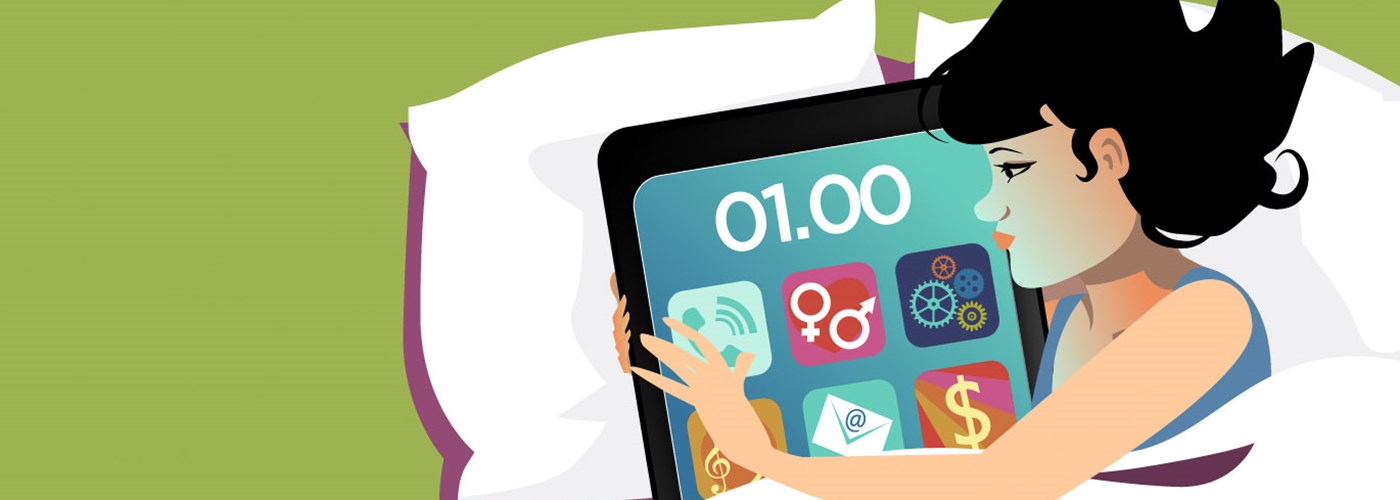7 health problems for the modern age
We're living longer than ever before but 21st-century lifestyles bring their own perils. Here are 7 common problems you may face in modern life.
Join the conversation on Facebook to let us know if your life has been affected or tweet using the hashtag #modernhealthproblems
1.Cyclist’s bum
Bikes are the way forward, but watch out behind
Cycling is on the rise, with more than two million Britons saddling up at least once a week, an all-time high according to British Cycling, the sport’s governing body in the UK.
But while being a good way to get fit, it can also have potential health issues. One such condition is ‘numb bum’ – or peroneal nerve compression –syndrome. Excess pressure from the saddle on the nerves near the buttocks can result in numbness, pain and tingling in the groin or legs.
If symptoms are left untreated, nerves can become thickened and damaged, potentially leading to lasting problems down below.
Research shows 61% of male and 34% of female cyclists are affected. Adjusting saddle angle, height and handlebar position can help shift weight away from the vital nerves.
Daniel Lloyd, a former Tour de France cyclist, says: “Taking a few seconds pedalling out of the saddle every few minutes can allow the blood to flow and alleviate pain.”
2. Text claw
Maybe it’s time to get a grip on your mobile use
Stepping onto busy roads while texting isn’t the only hazard for mobile phone addicts.
Text claw can affect frequent mobile users, resulting in wrist pain, thumb tenderness, hand spasms and difficulty with gripping.
Better known among doctors as De Quervain syndrome, text claw is a type of repetitive strain injury (RSI). The thumb is painful to straighten due to inflamed tendons. This stubby digit has evolved to grip and squeeze, not for the delicate, fast movements of text typing. Overusing the thumb in this manner can eventually cause tendons to become thickened and irritated.
The condition can usually be remedied by taking time out from thumb-intensive activities, applying ice to the area and taking pain relief if required.
3. Headphone-induced hearing loss
Why only Spinal Tap should be turning the volume up to 11.
More than one billion young people worldwide risk losing their hearing through unsafe listening practices, according to the World Health Organization.
Half of all people aged 12–35 regularly listen to music through headphones at levels above 85 decibels – the equivalent of a microwave beep – for prolonged periods.
Exposure to sound at this level for more than a few minutes damages the delicate sound-sensing hair cells deep within the ear.
These cells detect everything we hear but cannot be repaired once destroyed, and hearing loss is permanent.
Experts recommend volume should be turned up to no higher than 60% of a personal audio device’s maximum loudness.
And listening to music through headphones should be limited to one-hour stints, even when out and about.
4. Information fatigue syndrome
Learn to make more of less...
Life in the ‘information age’ can feel like weathering a never-ending storm of digital distractions, from 24-hour television to mobile phone messages and bulging email inboxes.
Dr Sandra Chapman, chief director of the Center for BrainHealth at The University of Texas, says: “Our brain is exposed to an unrelenting stream of information via various sources of technology and media, as well as an overabundance of input from family and social responsibilities. The sheer volume of information we are exposed to every day is nearly 200 times more than we were exposed to 20 years ago.”
This information deluge is equivalent to trying to read 174 newspapers every day, research suggests.
Trying to process the incessant electronic jibber-jabber can cause information fatigue syndrome (IFS) – also known as information overload. This can lead to anxiety, poor concentration, indecision, and a compulsion to check email, voicemail and social media.
Dr Chapman says: “Information overload degrades the brain’s ability to block out irrelevant information, decreasing efficiency and learning capacity. Those who experience information overload become paralysed by indecision.”
Take control of technological devices, rather than letting them control you, she advises. “Practise vetting and reading a single source of information to learn about a topic or inform a decision, instead of believing the more you read the smarter you will become.”
5. 3D viewing sickness
Specs appeal loses some of its allure?
There is a good reason 3D TV has proved a turn-off – it can make audiences feel ill, with some issues ranging from eyestrain or headaches to nausea.
Makers of 3D TV and cinema content have worked to avoid such side effects, but it was never going to work well for the three million Britons with strabismus – a squint – and other conditions that impair depth perception.
Normally when we see an object getting closer to us, our eyes rotate inwards to focus on it in a process called accommodation.
When watching a 3D film, our eyes focus
on an area in front of the screen, making everything momentarily blurry, which for anyone with less than perfectly aligned eyes or not sitting directly in front of the screen can lead to queasy, headache-inducing optical effects.
Most of us will enjoy the odd bit of 3D exposure, but its use as a more sustained format will take quite a bit of fine-tuning yet.
6. Blue light insomnia
Step. Away. From. The. Screen … and ZZZZ.
You may not realise it but your body knows what time it is. A tiny biological clock, no bigger than a grain of rice, ticks continuously in a brain region called the suprachiasmatic nucleus just behind the eyes. It tells your body when it is time to wake, time to eat, time to work and time to sleep. Our microscopic timepieces have served us unfailingly since the dawn of humankind. Until the advent of the digital screen, that is.
Without Greenwich Mean Time to tell it the hour, our biological clock relies upon daylight to keep it in sync. It interprets yellow frequencies of light as dawn and dusk and translates blue light to mean daytime. By unfortunate coincidence, modern LED screens and smartphone displays emit light containing blue light of the same hue as normal daylight.
Peering at a smartphone or tablet before bed, therefore, tricks your brain into thinking it is day – 78% of adults admit to using a digital device before bed. A few glances can be enough to cause levels of the powerful sleep hormone melatonin to plummet and stress hormones to surge. Dropping off then becomes much harder, and the next day’s rhythm is knocked off-kilter, resulting in morning sleepiness.
The easiest and most effective answer to a good night’s sleep is to leave the phone in the sitting room after dark.
7. Phantom phone vibration
Here’s one alert we should all be paying attention to...
Being disturbed by a mobile phone seems to be an inescapable part of modern life. Smartphone users typically receive about 50 alerts per day for incoming calls, messages, social media updates and calendar notifications.
Sometimes, though, prising an apparently vibrating phone from a pocket reveals a blank screen, with some 90% of mobile owners saying they’ve experienced this ‘phantom phone vibration’ (PPV).
According to Dr Robert Rosenberger, of the Georgia Institute of Technology in Atlanta: “Mobiles are somehow changing our brains, making us feel inclined to feel these vibrations.”
Worrisome but not harmful, PPVs can be a symptom of overwork, anxiety or sleep deprivation – just ask any bleary-eyed parent how jumpy they become when deprived of shut-eye. Thankfully, our electronic babies are far easier to get into sleep mode.
About our healthcare
Benenden Health provides affordable private healthcare for everyone, giving you access to services such as our 24/7 GP Helpline and Mental Health Helpline straight away. Once you’ve been a member for six months you can request access to diagnostic consultations and tests.
You'll also have access to a wealth of health and wellbeing articles, videos and advice on a range of health issues.



